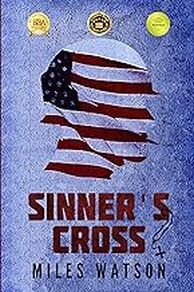 For fans of World War II fiction, military fiction, historical fiction or just good old fashioned action adventure, “Sinner’s Cross” by Miles Watson is a must read book. And, as the research for it is so good, it may appeal to amateur military historians too. I have to issue a “trigger warning” however. The scenes of combat and bloodshed depicted in the book are not for people with a weak stomach. The descriptions are quite graphic in parts. I’m sure the author would make no apology for that because, let’s face it, war is not pretty and not for the faint hearted. However, in terms of its storytelling, this book earns the five stars I have awarded. To be honest, I almost feel like breaking with tradition and awarding six stars. The story is set against the backdrop of the Battle of Hürtgen Forest, which took place between 19th September 1944 and 16th December 1944. It should be a battle that is far better remembered but was somewhat overshadowed by the Battle of the Bulge which started on the day the Battle of Hürtgen Forest officially ended. The Battle of Hürtgen Forest cost the lives of around 33,000 American soldiers, with another 55,000 wounded and it also took the lives of 20,000 German soldiers. There are also political implications to the battle which may be why it isn’t so well remembered. The battlefield was of very limited strategic value, certainly not enough to warrant the death toll, but it somehow became an obsession for the American generals to capture this obscure bit of forest, which lies to the east of the Belgian/German border and the German city of Aachen. Aachen was the first German city to fall to the Allies, which may have exaggerated the importance of the nearby forest. The story is told in three parts, with each part being seen through the eyes of a different protagonist. First we have Sergeant Edward T Halleck, a hard bitten former cowboy from Texas who has been in almost constant combat since the Allied landings in Morocco and Algeria in November 1942. His war weariness is such that he hardly bothers to memorise the names of the men sent to replace the casualties from his platoon, because he knows their chances of survival make it barely worth his while. The second point of view (POV) is from one of those replacements, “butter bar” 2nd Lieutenant Robert Breese. Breese believes he shouldn’t be in the Army and, if he must be, then his talents would be best used making Army recruitment films back in New York. He has no idea what he is doing in the Hürtgen Forest and even less idea of what he is supposed to do now that he is there. The final POV is from the German side of the battle. Major Martin “Zengy” Zengen is a veteran paratrooper who has fought in every engagement in which the fallschirmjäger have taken part since 1940. He has lost count of how many friends he has lost to the war but, until now, his dedication to duty has been unquestioning. His epiphany, when it comes, takes an unusual form (which I won’t reveal) but it is so deeply moving for him that it completely reshapes his thinking. Each part of the book stands alone, so there is no switching back and forth between POVs, but characters from one part do pop up in the others, so that some of the consequences of some of their actions can be observed. What makes this book so enthralling isn’t the characters, though they are well drawn, it is the story telling as a whole. I found myself living and breathing the combat almost as though I was there. The reader feels every explosion, hears every bullet cracking past their ear and smells the smoke and blood of battle. It is quite unnerving at times just how deeply it is possible to get drawn into this story – hence the trigger warning issued above. The historical detail is exemplary and Miles Watson is obviously a keen scholar of World War II history. He pays attention to the minutest detail, but at no point does he ever cross the line into geekiness. There is a sequel to Sinner’s Cross (the title comes from the scene of much of the action) called The Very Dead of Winter. I have to confess that I read that before Sinner’s Cross (see review in the blog archive) which is why I came back to read the first book. Knowing which characters survive to reappear in the later book, however, made this book no less enjoyable. I can only hope that Miles Watson finds time to write a third book for the series. I cannot recommend “Sinner’s Cross” by Miles Watson, highly enough. To find out more, click here. If you have enjoyed this blog, or found it informative, then make sure you don’t miss future editions. Just click on the button below to sign up for our newsletter. We’ll even send you a free ebook for doing so.
0 Comments
 One of the common questions seen in writers’ groups on social media is “How much do authors earn?” The question comes in a variety of forms, some trying to disguise the fact that the person asking the question is only interested in making a quick buck and thinks that being an author may be the way. But some people genuinely see being an author as being the road to making a decent living. Of course, for some authors, it is a way of making a decent living. Indeed, some authors become very rich through their writing. But for Joe (or Josephine) Average, the average author, is it a realistic way to make a living? We would say it probably isn’t. I’m afraid we have the data to back that up as there has been a lot of research into this over the years. 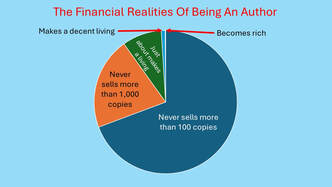 Let’s start with some basic facts. 70% of all the authors who publish or are published, never sell more than 100 copies of their books. Some of that is to do with marketing, of course. If no one knows about the book they can’t buy it. Some of it is because the books are about subjects that don’t have a wide audience appeal. They are either on very niche subjects or they are memoirs about lives that just aren’t that fascinating, but the author thought they were. Finally, they just aren’t very good books, certainly not as good as the author thought they were, and can’t garner enough good reviews to encourage people to buy them. Of the remaining 30% of books published, 70% of those won’t sell more than 1,000 copies. That’s about 21% of the total number of books published (so we’re now up to 91% of the published total). Again, the reasons are varied, and marketing once again takes centre stage, but the fact that the book has sold between 100 and 999 copies suggests it isn’t a bad book, per se. But that leaves just 9% of books published selling more than 1000 copies. However, you need to sell about 30,000 copies to make a living wage. That is to say, a wage good enough not to have to do any other work. Even then that will depend on other factors in your life such as the size of your mortgage (or amount of rent you pay), the size of your family and your lifestyle. One person’s living wage is another person’s poverty – or wealth. Less than 1% of authors make what we might regard as “decent” money and only 0.1% ever become rich from their writing. And even then, most of their wealth doesn’t come from their books, it comes from the TV and film rights for their books. So, if you haven’t written the first word of your novel, how do you know if you are going to be in the 99% or the 1%? You don’t. 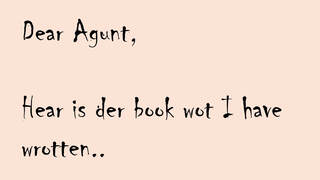 If you get as far as completing a good draft you start to get some indication of your likely success from the reaction to your work from agents, though it takes some time to gather enough data. One rejection doesn’t mean much. It just means that the agent may be too busy or doesn’t really like your genre, or just didn’t get your “message”. Ten rejections should start the author thinking a bit, but it still isn’t conclusive evidence. According to publishing legend, J K Rowling received at least 10 rejections for her first Harry Potter book. But once you get to around 20 rejections the message should be becoming clear. Even then, the message only applies to that book. Some authors query three or four books before they get one accepted by an agent. What made that book different from the first three? The author will probably say there was nothing different about it. But the agent thought it was different enough to take a chance on it, so there must have been something.  But even then the story isn’t finished, because there is a growing body of self-published authors that are making 6 digit and even 7 digit royalties. So, the agents obviously don’t know everything when it comes to what makes a best-seller. But what makes those 6 digit self-published authors different isn’t necessarily their writing. I have read some of their books. They are OK, but I wouldn’t call them remarkable. In fact, some could be described as mediocre – but they still sell. What is different is that their authors invest a lot of time, effort and (probably) money into marketing. They have become expert at it, which is how they are able to sell so many books. As a small publisher, we have seen this for ourselves. When we market a book, we sell copies. When we stop marketing it, sales dry up very quickly. Authors think that what they are paying us for is editing, cover design, proof reading, formatting etc. Sure, we do those things, but the authors could pay anyone to do those things for them. No, what we are really being paid for, and the way we make our money, is book marketing. Yes, we do the other stuff, but until the book sells we don’t make a penny and neither does the author. Marketing pays for everything. And, while trad publishers may tell you otherwise, it is in the marketing of books that they also make their money. Everything else they do costs them money. Editors, cover designers, proof readers and the rest of the publishing team, all have to be paid before the books have sold a single copy. So, if you want to make money out of being an author, you must first learn how to be a marketer. Once you know how to do that, then start writing your book. Doing it the other way around only leads to disappointment, because it takes longer to learn to be a successful marketer than it does to write a book.  And if you do that, you might just make a decent living out of writing. Even if you are certain your book is going to find an agent and be trad published, you can’t be certain that will happen. So if/when the horrible truth hits you, it is already too late. It’s fine to have a dream that one day your writing may make you rich but keep yourself grounded with the knowledge that it may not happen. And even if it does happen, it may take some time before it does. To quote Kipling “If you can dream and not make dreams your master;” If you have enjoyed this blog, or found it informative, then make sure you don’t miss future editions. Just click on the button below to sign up for our newsletter. We’ll even send you a free ebook for doing so. 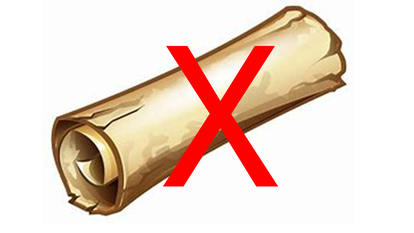 All Indie authors know how important their book cover is when it comes to selling their book (if you didn’t, you do now). But images in general are vital when it comes to promoting books. It’s no good having a great cover if you can’t get people to go and look at the book’s product page. Many authors use social media to direct people to product pages, but over recent years the effectiveness of this approach has declined. And there is a very good reason for that. The key words I want you to remember from this blog are “Stop The Scroll”. Did you know that the average social media user scrolls the equivalent to the height of the Eiffel Tower on their social media every day? 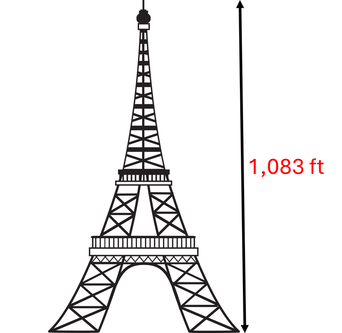 Just to put that in context, that’s the equivalent to 1,083 ft give or take the odd inch (330 metres to the tip of the radio mast). That is a lot of scrolling. Social media users are continually scrolling, scrolling and scrolling as they search for the next thing to catch their attention. Even when they stop scrolling they often don’t pay attention to a post for more than a few seconds. The average attention span for a post on social media is only 1.5 seconds according to research carried out by Linkedin. When it comes to selling books, social media is what is called a “secondary source”. That means people don’t go onto it specifically to find books, the way they would on Amazon or one of the other book selling websites. They go on social media for different reasons. Which means that the challenge for the Indie author is even greater. 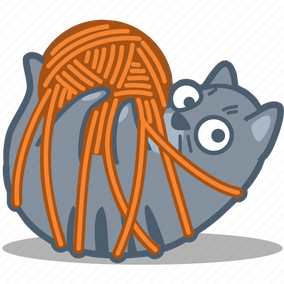 The challenge is to stop the social media user from scrolling past their post for long enough to read the content and take an interest in the book, even though they aren’t looking for books to buy.. And it is a considerable challenge. They are in competition with cute kittens, people falling into rivers hilariously and pouting celebrities with big bottoms, for goodness sake. Which means the imagery used in promotional posts has to be equally eye catching, if not more so. It literally has to make people say “Wow, I wonder what that’s all about?”. So they have to stop scrolling for long enough to find out. Did you know, you don’t actually have to put your book cover in your promotional imagery? In fact, it might even be counterproductive to do so.  When people see a book cover in a post, they automatically think “Oh, just another author promoting their book” and they scroll past – even if they might actually enjoy reading the book. Because they’ve only looked at it for a fraction of a second they have no idea if it’s even in a genre they like to read. But if they see an intriguing image that doesn’t feature a book cover, they may stop scrolling for just long enough to start reading the text that goes with it. And once they start reading the text they might just find out about a book they might be interested in. For example: 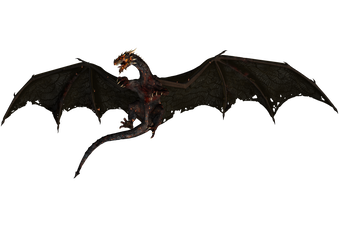 If they see an image featuring a book cover with a dragon on it, they might think “Oh, just another fantasy author promoting their fantasy book” and scroll past because they’ve got a shelf full of fantasy books already. But if they see an image of a dragon without a book cover, they might say “Oh, a dragon. I like dragons. I wonder why someone has posted an image of a dragon?” Do you see how the psychology of that works? Instead of saying “Here’s my fantasy book, please buy it.” the author is saying “Look here, I’ve got something interesting to say about dragons.” 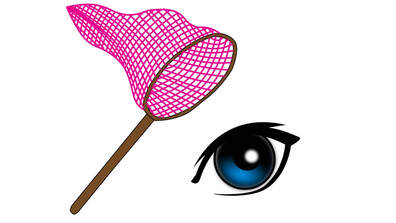 As a social media user, which approach would stop you from scrolling past? Now, I’m not saying it will turn zero sales into millions of sales by itself. But if it gets you a few more clicks to the sales page of the book, then the sales page may do the rest of the work for you. But if someone scrolls past your post because they think they don’t need another book, you get nothing. So, what sorts of images will stop the scroll? Two things mainly. One, they will be eye catching, making the viewer want to ask questions about them. Two, they will relate directly to the genre of the book. 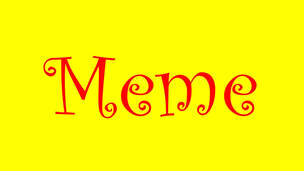 People are always looking for memes they can share, so putting some text with an image can also stop them from scrolling because they think the post may be a meme. Not the book title, but something related to the book. An extract from a review works well, especially if accompanied by a star rating*. Make sure you say “Reader Review” or “Amazon Review” etc. Other short text, eg “Jaw dropping adventure” also works. Making different versions of the image and posting them on different days will attract the attention of different potential readers, so don’t be scared to try out different ideas. If you use the site’s metrics you’ll soon learn what works for your genre from the way people react to the posts.  Try using variations of your images. Try using variations of your images. You can actually use elements from the book cover if they can stand by themselves, or you can create a scene that incorporates the cover image (minus the title, author name etc). Photoshop, Canva, Bookbrush et al have tools to help you create interesting images. Just because you normally turn them into a book cover doesn’t mean you can’t also use them as a picture by themselves. 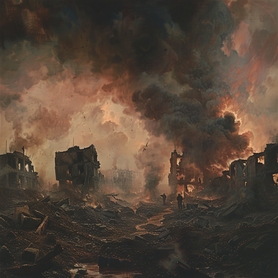 This is one area where I have no qualms about suggesting that you use AI. It is the ideal tool to allow you to create genre specific images that result in professional quality pictures. I’ve played around with it and the image alongside this was created using AI. Would you scroll past that? . Well, to answer our own question, we posted two versions of it on a social media page. Version 1 included a book cover and version 2 didn’t. Both versions were accompanied by the same text, which was taken from the blurb for the book, plus a link to click on. Version 2 got almost double the number of link clicks compared to version 1. So, dear reader, what are you going to do to “Stop The Scroll” past your book promotions? * Please don’t make up review extracts or fake star ratings. Readers may check them out and if they do they may make adverse comments on the original post, which will undo all your good work. I know you would never do that, but I thought I’d better say it anyway. If you have enjoyed this blog, or found it informative, then make sure you don’t miss future editions. Just click on the button below to sign up for our newsletter. We’ll even send you a free ebook for doing so. We are turning this week's blog over to one of our authors, Robin Saint, posting on the subject of Robin Hood. Disclaimer: The views expressed in this blog are not necessarily those of Selfishgenie Publishing. 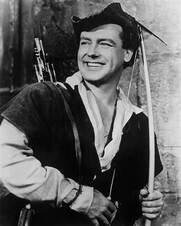 Actor Richard Greene as Robin Hood. Actor Richard Greene as Robin Hood. As a youngster I was brought up on stories of Robin Hood. There were the movies of course, with Douglas Fairbanks and Errol Flynn, that used to pop up on Sunday afternoon TV. Even Disney gave us a cartoon version. But the big influence was the ITV series starring Richard Greene that ran between 1955 and 1959 (though it seemed to run for much longer). There were other series that came later, some better, some worse, but the 1950s version was the one that shaped my memories. Once I started to read for entertainment, rather than just to learn to read, Robin Hood books were high on my reading list. There were many written for children, and I probably read them all. As a naïve child I loved the idea that someone would exercise justice on behalf of the “little people” and right the wrongs that the rich and powerful perpetrated. How the persecuted sub-postmasters of the UK could have done with a Robin Hood to fight their corner for the last 20 odd years. But then I grew up and realised that while we would love people like Robin Hood to have existed, they probably didn’t. At least not in the form the stories say they did. 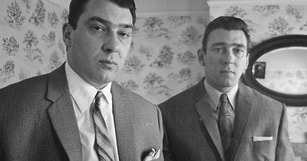 The Kray Twins, scourge of London's East End The Kray Twins, scourge of London's East End Many criminals have been compared to Robin Hood in their actions. I can remember the notorious London gangsters the Kray Twins* being given a favourable comparison in some quarters because they “loved their mum” and also because no crime was allowed to be committed in their “manor” without their permission, which made it a “safe place to live”. There are two things wrong with that comparison. Firstly, just because someone loves their mother it doesn’t make them a good person. All criminals have mothers and on the basis of statistical probability alone, some of them will love their mothers. The second thing is that if the Krays stopped other criminals from operating in their neighbourhood, it was only so that they could keep it all to themselves. They operated protection rackets and other criminal enterprises that preyed on their neighbours and if anyone crossed them, they would soon find out how unsafe the East End of London could become. It was, perhaps, the arrest and prosecution of the Kray Twins in the late 1960s that made me start to re-think the story of Robin Hood. 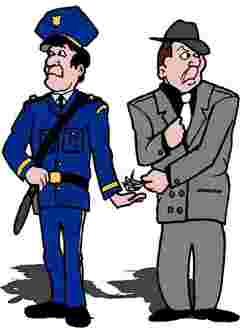 By now I knew that there had probably never been a real Robin Hood. There may have been a few real people (petty criminals in the main) who provided the basis for the stories, but the man himself never existed. One such story originated in Barnsdale Forest in Yorkshire, where a Robin Hood type figure used to stop travellers on the road and demand they pay a “tax” to continue their travels unmolested. Another way of describing that is as a protection racket, aka extortion. But what changed for me was the idea that just because a person loves their mum or looks after their neighbours, it doesn’t mean they can’t be a violent criminal as well. For example, if you need an alibi, then it helps to have a friendly neighbour who can provide it. If someone has knowledge of your actions or whereabouts, then it is probably a good idea to make sure that they are looked after. A small favour here, a bribe there and they’ll keep your secrets. And if they don’t, an underlying threat of violence will keep flapping lips closed. 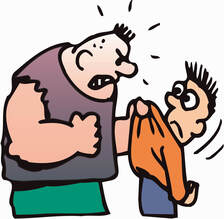 Robin Hood (if he existed) robbed from the rich, because that’s what criminals do, but he didn’t give to the poor – he bribed them. The poor peasants of Sherwood Forest would keep his whereabouts a secret so long as he was paying them more than the measly reward being offered by the Sheriff of Nottingham. And if the Sheriff of Nottingham increased the reward money, there was always the threat of violence to ensure the peasants’ continued silence. At the time these thoughts started to form I didn’t have much time to do anything with them. I had a full and busy life (I still have) and the idea of writing a book just didn’t seem feasible at the time. It was many years later when I started to write the odd paragraph that laid out my thoughts on the subject. The thoughts turned into characters and once I had those I could create the conflicts that would turn into a plot. So, what of the other characters? I won’t bother with the other outlaws. Criminals often work in gangs so we can assume that if Robin Hood is a bad guy, then his pals will be bad guys too. I gave some of them back stories, but ones that would lead them into a life of crime. 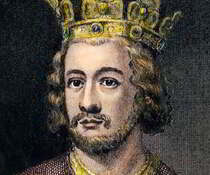 King John King John We have Prince John (as he was at that time). Well, he was the fourth son of a King and in those days the sons of kings pretty much took what they wanted. Historically, John didn’t have any land to draw an income from. His father had granted him rule over Ireland, but first he had to conquer it and that didn’t work out too well. When his big brother Richard became King he gave John the rights to the taxes from Leicestershire, Derbyshire and Nottinghamshire so that he would have some form of income. John gave orders to squeeze aa much in taxes from those counties as was possible, but that was the Sheriff’s job regardless of whether the taxes went to Richard or to John. John wasn’t a great Prince or King, but history tends to paint him as being worse than he really was for the period. Trust me when I say we have had worse kings (and queens) than John. The Sheriff of Nottingham was just doing his job, really. His job was to keep the peace and to collect the taxes on behalf of the King (or in this case, Prince John). Nobody likes tax collectors and if you were a criminal in Nottinghamshire you had other reasons not to like the Sheriff very much. In modern terms many people don’t like or trust the police, but they are the first ones to call 999 when their houses are burgled. So, I decided that the Sheriff of Nottingham was probably nothing out of the ordinary for the period, but he did have a boss that wanted more money, so he was probably a bit zealous when it came to collecting the taxes. 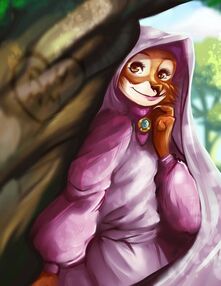 Maid Marion, a really foxy lady. Maid Marion, a really foxy lady. Maid Marion was probably the hardest character for me to create. At first I made her a “bad girl” who was attracted to Robin because of his nasty character (according to my version of him). It is a familiar trope and one that exists in real life (Bonnie and Clyde, Rose and Fred West, Myra Hindley and Liam Brady et al). But I realised I needed a nice character to contrast all the bad ones, so that became part of her role in the story. She’s a bit of a “goody two shoes” but that just helps to contrast with Robin’s darkness. Robin himself was easy to create. 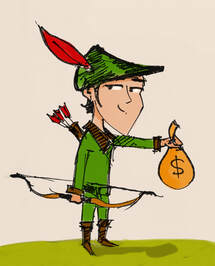 I followed some of the mythology and had him serving with King Richard’s crusaders, but rather than being a heroic figure coming home to reclaim his land and titles, I decided that he had used his time the Middle East to line his own pockets (the real purpose of the crusades was to grab land and wealth anyway. The re-conquering of Jerusalem for Christianity just provided an excuse.) and that had led to him crossing the wrong person. He fled King Richard’s army and returned to England. As he had been declared an outlaw for what he had done he had to live by his wits which, in those days, meant robbing and stealing. But even if Robin hadn’t been declared an outlaw, he would probably have followed a criminal path, because he wasn’t the type to earn an honest living. At least, my version of him wasn’t. That left me needing a hero, so I used a popular trope, which is the wrongly accused man. My hero, Erlich, is falsely accused of killing his own father and has to go on the run or face a noose. He finds a relatively safe haven with Robin Hood and his gang but hates the life they lead. All he really wants to do is clear his name and go back to his old life.. 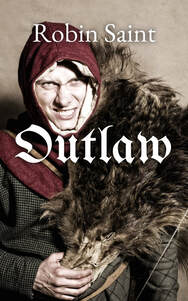 So, with a cast of characters all I needed was a plot to carry them and there were plenty of tropes to call on for that. Readers may recognise some of them. That is how I created Robin Hood the bad guy and turned him into my novel “Outlaw”. If you have any questions, feel free to post them in the comments section below and I’ll be happy to answer them. To find out more about “Outlaw” by Robin Saint, click this link. * Editor's note: Little known fact: The Kray Twins were the last prisoners to be held in the Tower of London. Ask in the comments section if you want to know why. If you have enjoyed this blog, or found it informative, then make sure you don’t miss future editions. Just click on the button below to sign up for our newsletter. We’ll even send you a free ebook for doing so.
|
AuthorThis blog is compiled and curated by the Selfishgenie publishing team. Archives
June 2025
|

 RSS Feed
RSS Feed